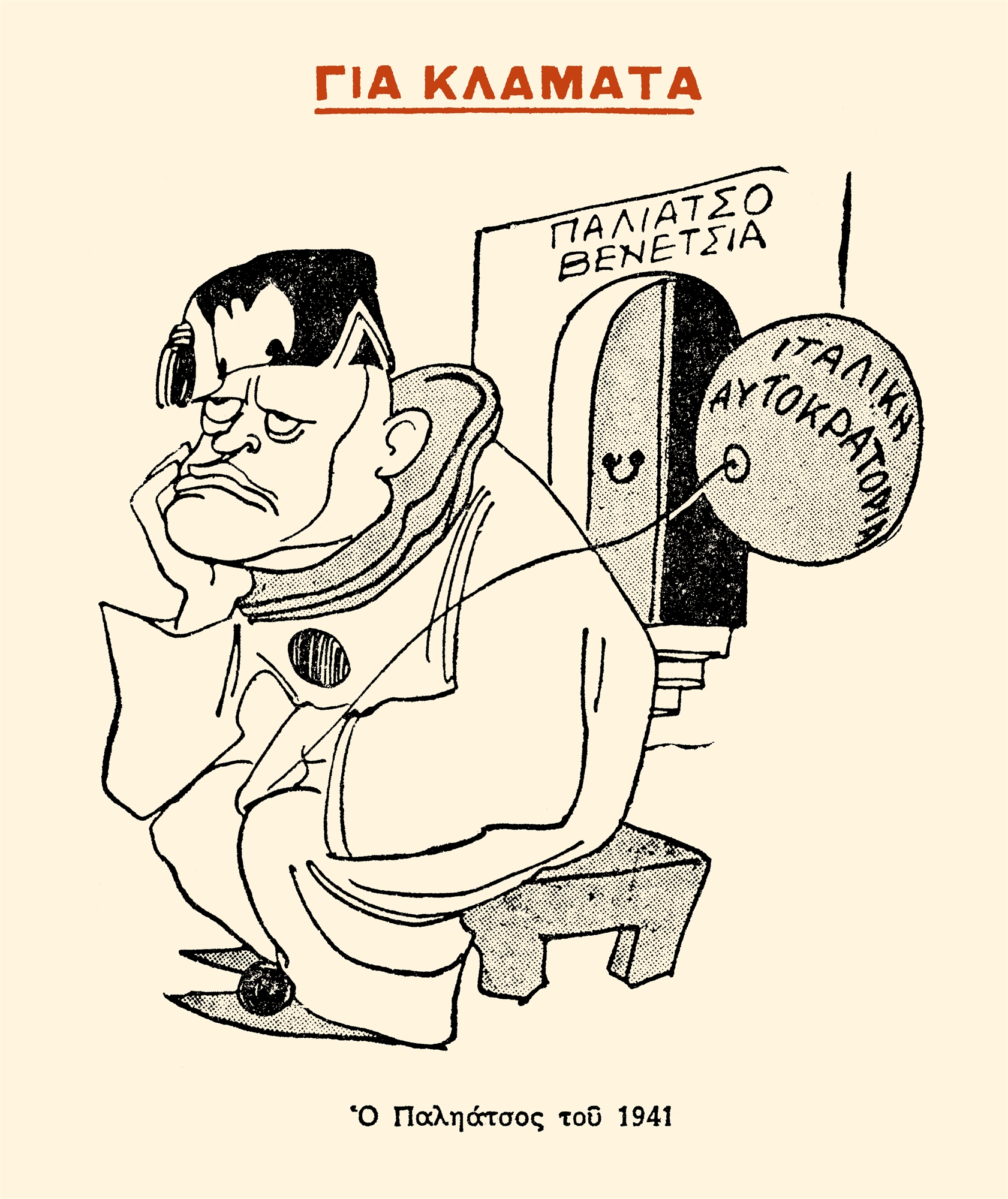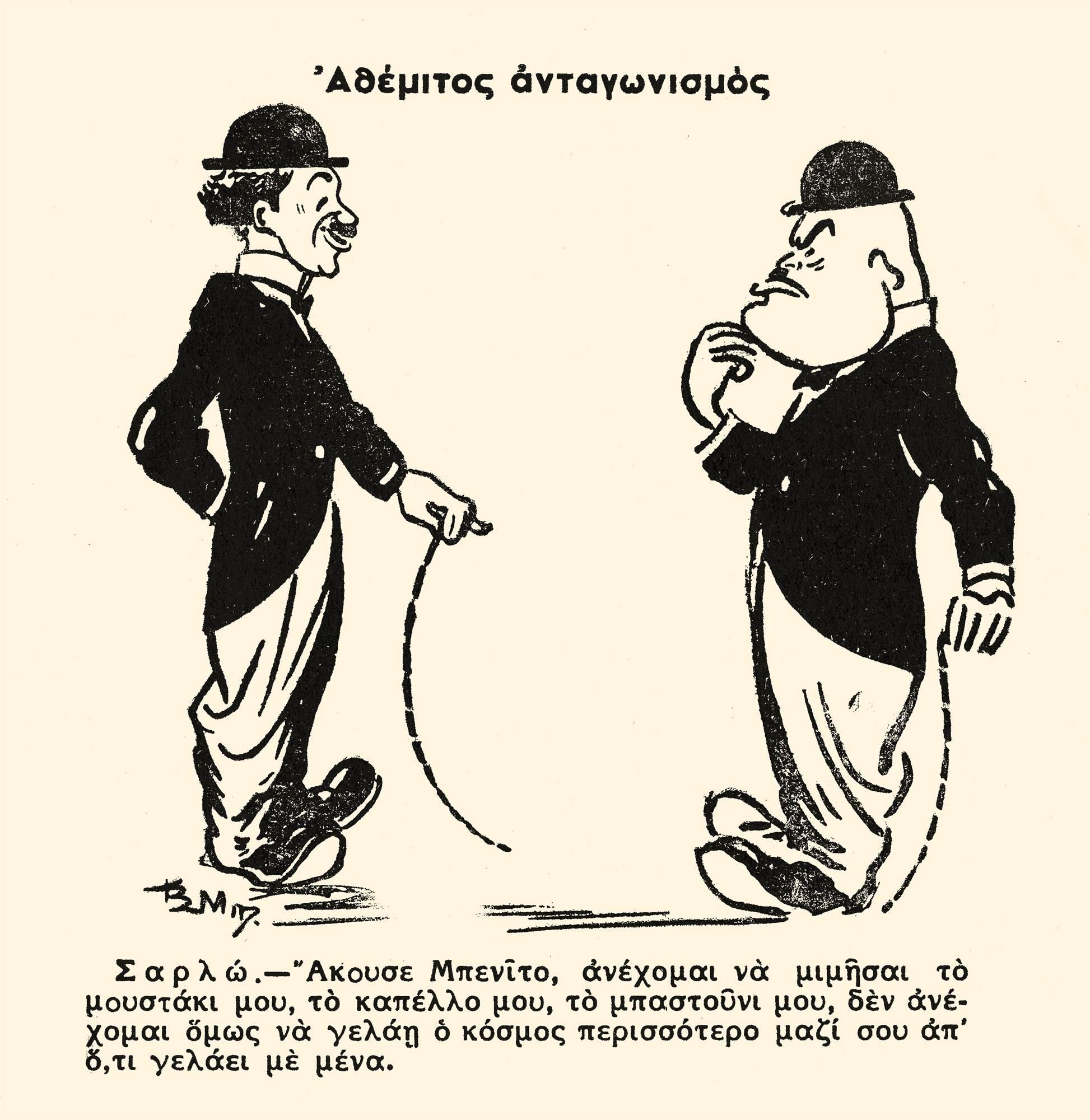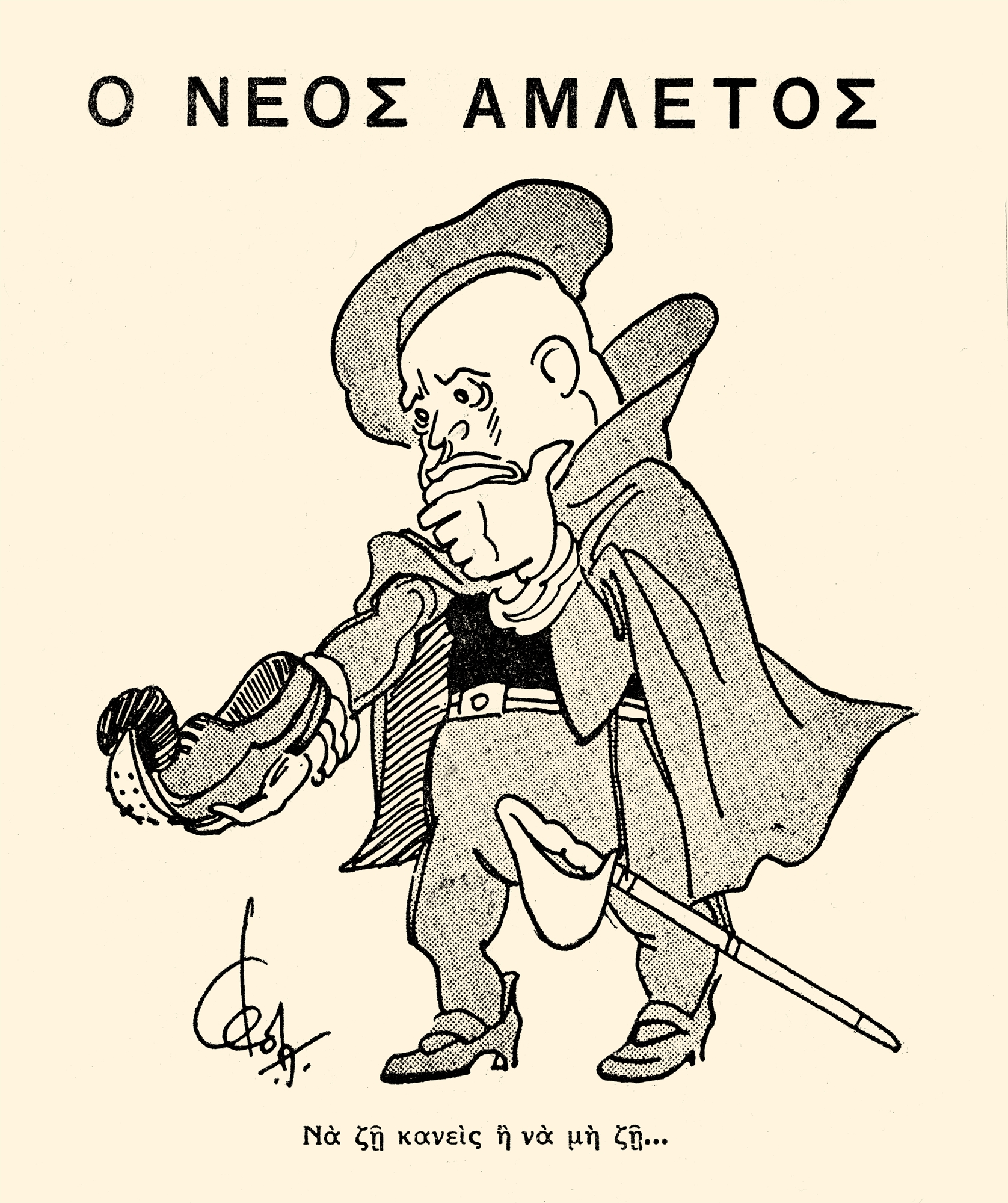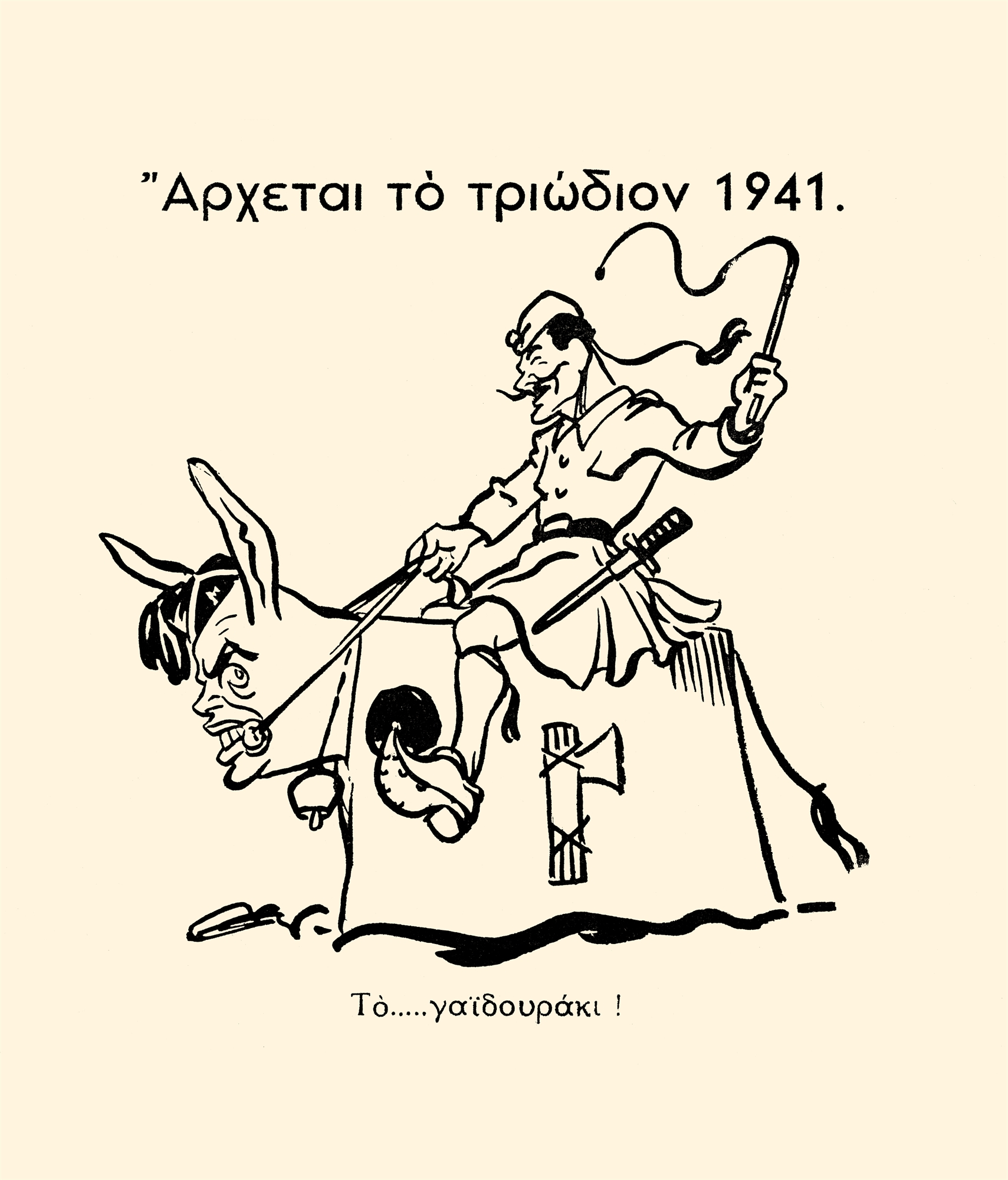
What do Don Quixote, Hamlet, Julius Caesar, Madame Sousse, Charlot and Saint Basil have in common? Benito Mussolini. For his sake, in the winter of 1940-41, they all “squeezed” into the front pages of Greek newspapers, ridiculing the leader of fascist Italy and his “brothers”. And they entered there thanks to the “Penakias” of the 1940s, the Greek cartoonists of the interwar period, who in October 1940 armed themselves against the invaders for half a year and fought their own battles from the front pages of newspapers.
During World War II, cartoons were used by organized propaganda networks of opposing factions to boost the morale of combatants and civilians and harm the enemy. “To some extent, cartoons have become a weapon,” says Boris Yefimov, who devoted his art to promoting the Soviet Union for 80 years.
In Greece, the leader of neighboring Italy, Benito Mussolini, occupied cartoonists long before the war, as after the Italian invasion of Corfu in 1923, he gradually became identified with the image of a haughty military leader. In 1936, the 4 August regime banned satire (with or without illustration) of any head of state.


However, with the declaration of the Greco-Italian war, although the censorship was not abolished, the excuses collapsed. Satire was now necessary, as it harmed their image and contributed to the morale of the Greeks. The first cartoons appear at the beginning of November, and after successive victories they increase spectacularly. In December, official leaflets were distributed as “strangled” cartoons. The newspaper “Niki” (12.14.1940 – 19.04.1941) distributed “Photo Album and Caricature”, the future “most valuable relic”, for free. Magazines of various subjects included satirical headings in their material (for example, the heading “On foot through the war” in Thesauros). New military satirical publications appeared, such as “Air” (03/07/1941), and others were adapted, such as, for example, “Editor’s Lantern”, which in February 1941 was ordered to turn off the light.
The cartoons were also regularly published in newspapers (I Kathimerini, Eleftheron Vima, Athinaika Nea, Asyrmatos, etc.). They were signed by old (Dimitriadis, Kastanakis, Vottis, Papadimitriou, Papageorgiou, Theodoropoulos, Antoniadis, Geivelis, Aristeas) and new cartoonists (Bezos, Katsouros, Pavlidis, Vlassopoulos, Polenakis, Nikolinakos), as well as artists (Neuros, Christophis, Vassiliou). , Mastichiadis). These sketches were once republished in several copies and scattered through the streets like a full house. They also illustrated letters-letters that came to the front, traveled abroad, and some were found with Italian prisoners of war. Newspapers such as Tipos and Neos Kosmos published their readers’ sketches, and Nike organized open cartoon competitions for amateur artists, young and old.


These sketches were once printed in multiple copies and scattered around the streets like advertisements.
Since the Greek government insisted on a ban on satire of Adolf Hitler, cartoonists mainly dealt with Mussolini, who seemed equally deplorable in the form of a jester and in the form of Julius Caesar, and with his headquarters (Ciano, Prasca, Sodu Badoglio, Cavalero). The Italian soldiers, poor and frightened, who usually run in disarray at the sight of a single gun, were also targeted. Puns inspired by the names of Italian divisions comment on “Centaurs turned hares” (referring to the armored division Centauro) or “Wolves joined the herd” (infantry division Lupi di Toscana). Against the arrogant Aesons, being in the company of English and Australian gunners, they triumph, “dancing in the frying pan” of Mussolini and his arrogant generals and taking “rooster pasta” to hunt. The protagonist, however, is none other than the legendary tsaruchi: tank phalanxes, tank barricades, tank rain, bomb tanks stand in the way of the Italians. In the cartoons of the 1940s, the king dominates, as in the nightmares of Italians. And so, in one of the best sketches of that time, the tsarukhs will awaken fundamental existential concerns in the sea prince in black robes (“New Hamlet”)!

Inventive and poignant, their Greek caricatures of the 1940s are distinguished by subtle humour, derisive but not malicious. The well-aimed signatures demonstrate the erudition of their creators, who adapt ancient Greek sayings, folk proverbs, riddles, sports, references to ancient Greek mythology, philosophy, history, Spanish literature, English theater, Italian opera, cinema, into a Greek euthymogram and into a love song.

The war cartoon is experiencing moments of glory taken from the epic of the Albanian front. The festive atmosphere ended with the beginning of the occupation. For four years, cartoonists kept their work tightly sealed in boxes, hoping someday to publish them. Like Stamatis Polenakis, who, on the back of the cupboard in his father’s house on Sifnos, under the noses of the conquerors, “embroidered” Mussolini’s suffering with his pen: “Of course, I took action. I had a cache ready, in which the project that I was doing was hidden in three seconds. As for the design paraphernalia, next to me was an unfinished, innocent landscape!
* Ms. Natasha Kastriti is an art historian and general curator of the collections of the National Historical Museum.
Source: Kathimerini
James Springer is a renowned author and opinion writer, known for his bold and thought-provoking articles on a wide range of topics. He currently works as a writer at 247 news reel, where he uses his unique voice and sharp wit to offer fresh perspectives on current events. His articles are widely read and shared and has earned him a reputation as a talented and insightful writer.